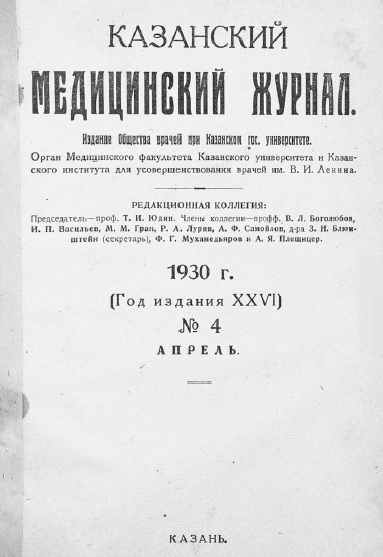Reform of medical education and institutes for advanced training of doctors
- Authors: Luria R.A.
- Issue: Vol 26, No 4 (1930)
- Pages: 411-417
- Section: Articles
- URL: https://ogarev-online.ru/kazanmedj/article/view/54553
- DOI: https://doi.org/10.17816/kazmj54553
- ID: 54553
Cite item
Full Text
Abstract
The tremendous shifts in production relations in the country, both in the field of its industrialization and in the socialist sector of agriculture, have called for ambitious plans for the socialist reconstruction of health care. By the end of the five-year plan, you need to have approximately 60 thousand medical personnel, about 140 thousand nursing staff. And not only doctors and medical staff, not only who received medical education in general, but practical specialists in the field of medicine and health care. This led to a grandiose restructuring of the entire medical education, to the transfer of medical universities and medical schools to the health authorities with a close connection of the new curriculum with the production itself. In other places (see "On the front of health care", No. 4, 1930, "Soviet doctor", 1930 and "Medical business", 1930) I dwelt in detail on how this reform of medical education would affect the state improvement of doctors, and tried to show that the new installation of medical universities and the new huge tasks facing the health authorities in connection with the unprecedented growth of cultural needs of the masses not only does not diminish, but significantly increases the importance of institutions with the task of raising the qualifications of a Soviet doctor
Keywords
Full Text
##article.viewOnOriginalSite##About the authors
R. A. Luria
Author for correspondence.
Email: info@eco-vector.com
Russian Federation
References
Supplementary files






